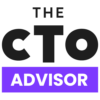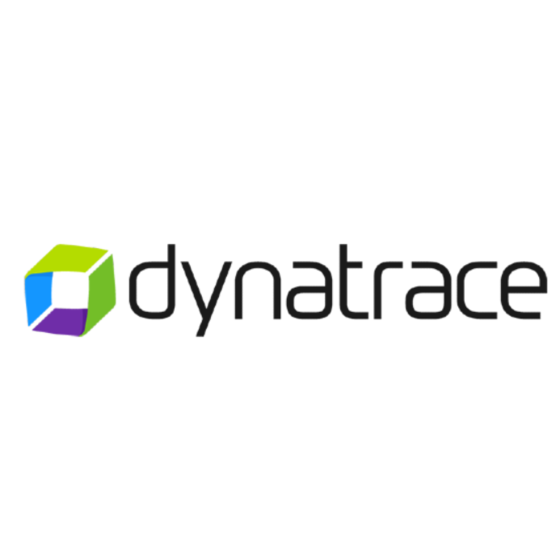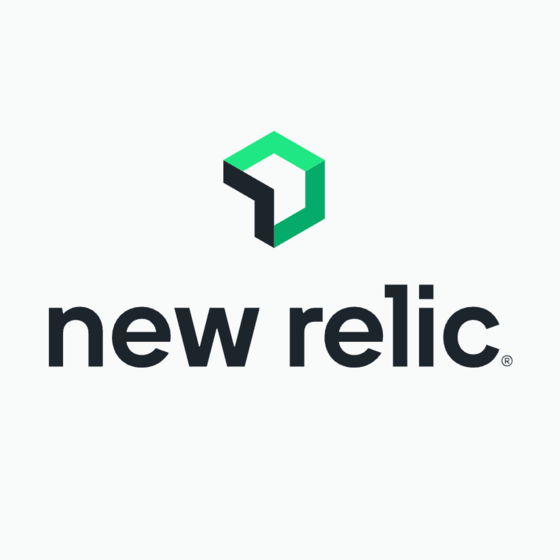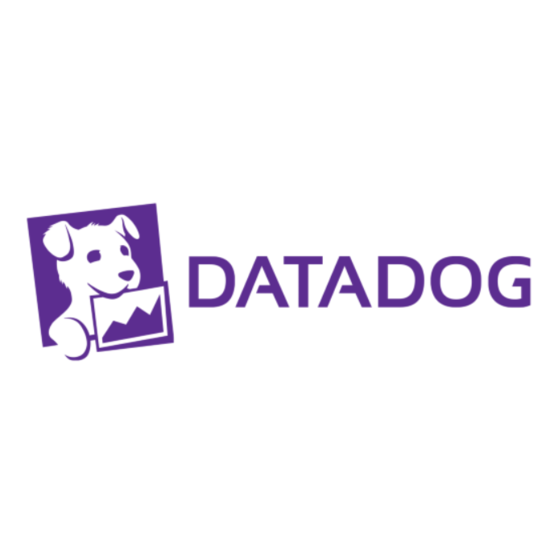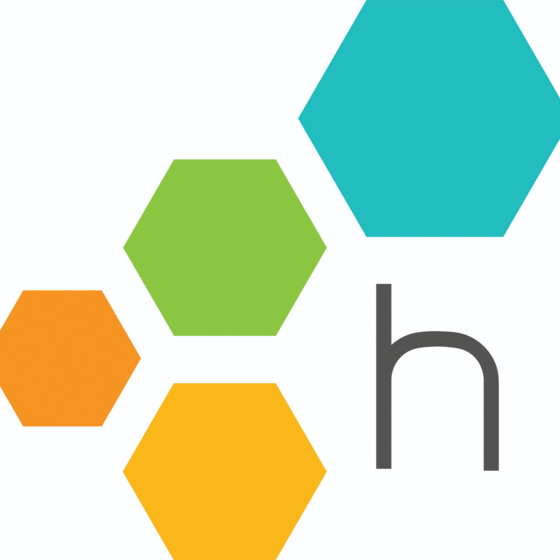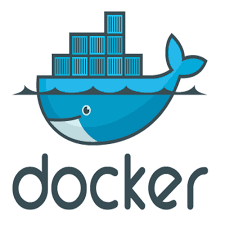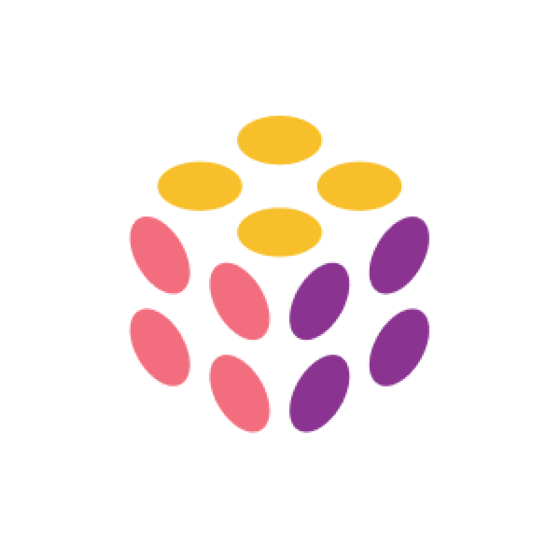Best Observability Platforms Shortlist
Here’s my shortlist of the best observability platforms:
Our one-on-one guidance will help you find the perfect fit.
Observability platforms help you monitor, measure, and understand what’s going on across your systems so you can spot issues early and keep things running smoothly.
Many teams start searching for these tools when they struggle to connect logs, metrics, and traces or feel unsure about what’s really happening in production. Without a solid observability setup, it’s easy to miss patterns that cause downtime or frustrate customers.
I’ve worked with SaaS development teams to put observability systems in place that improve performance and reduce firefighting. This guide builds on that experience to help you find a platform that fits your team’s needs and makes day-to-day operations clearer and more reliable.
Why Trust Our Software Reviews
We’ve been testing and reviewing SaaS development software since 2023. As tech experts ourselves, we know how critical and difficult it is to make the right decision when selecting software. We invest in deep research to help our audience make better software purchasing decisions.
We’ve tested more than 2,000 tools for different SaaS development use cases and written over 1,000 comprehensive software reviews. Learn how we stay transparent & check out our software review methodology.
Best Observability Platform Summary
This comparison chart summarizes pricing details for my top observability platform selections to help you find the best one for your budget and business needs.
| Tool | Best For | Trial Info | Price | ||
|---|---|---|---|---|---|
| 1 | Best for AIOps capabilities | 15-day free trial + demo available | From $0.0001 | Website | |
| 2 | Best for full-stack visibility | Free plan + demo available | Pricing upon request | Website | |
| 3 | Best for application performance | Free trial available | From $6/month (billed annually) | Website | |
| 4 | Best for cloud monitoring | 14-day free trial available | From $15/user/month | Website | |
| 5 | Best for distributed tracing | Free demo available | Pricing upon request | Website | |
| 6 | Best for real-time metrics | 14-day free trial available | From $19/month | Website | |
| 7 | Best for automated root cause | 14-day free trial + demo available | From $75/month | Website | |
| 8 | Best for time-series data | Free demo available | Pricing upon request | Website | |
| 9 | Best for log analysis | 14-day free trial | Pricing upon request | Website | |
| 10 | Best for event-driven insights | Free plan + demo available | From $130/month | Website |
-

Docker
Visit WebsiteThis is an aggregated rating for this tool including ratings from Crozdesk users and ratings from other sites.4.6 -

Pulumi
Visit WebsiteThis is an aggregated rating for this tool including ratings from Crozdesk users and ratings from other sites.4.8 -

GitHub Actions
Visit Website
Best Observability Platform Review
Below are my detailed summaries of the best observability platforms that made it onto my shortlist. My reviews offer a detailed look at the key features, pros & cons, integrations, and ideal use cases of each tool to help you find the best one for you.
Dynatrace is an all-in-one observability platform designed for IT operations and DevOps teams, offering insights into applications, infrastructure, and user experience. It helps businesses monitor and optimize their digital ecosystems with AI-driven analytics.
Why I picked Dynatrace: It leverages AIOps capabilities to automate problem detection and resolution. Dynatrace offers automatic discovery and mapping of your entire application stack, providing a clear view of dependencies.
Its AI engine, Davis, helps you identify root causes and prioritize issues based on business impact. The platform's real-user monitoring gives you insights into user interactions and experiences.
Standout features & integrations:
Features include automatic discovery that maps your application stack without manual configuration. The AI engine Davis provides root cause analysis, helping you quickly address issues. Real-user monitoring offers detailed insights into user interactions and performance metrics.
Integrations include AWS, Azure, Google Cloud Platform, Kubernetes, Docker, ServiceNow, Jira, Slack, Ansible, and VMware.
Pros and cons
Pros:
- Automatic dependency mapping
- Real-user monitoring
- Detailed root cause analysis
Cons:
- High resource consumption
- Limited customization options
New Relic is a comprehensive observability platform for application performance monitoring. It's tailored for developers and IT operations teams who need full-stack visibility into their applications and infrastructure.
Why I picked New Relic: It provides full-stack visibility, which is crucial for monitoring every layer of your tech stack. New Relic's distributed tracing helps you understand the flow of requests across services.
Its real-time analytics offer insights into application performance and user experience. The platform's alerting system ensures you're informed about issues as they arise.
Standout features & integrations:
Features include distributed tracing that lets you track requests across your services. The platform's real-time analytics provide insights into application performance and user experience. New Relic also offers an alerting system to keep you informed about any issues.
Integrations include AWS, Azure, Google Cloud, Kubernetes, Slack, PagerDuty, Jenkins, GitHub, Docker, Elasticsearch, and ServiceNow.
Pros and cons
Pros:
- Full-stack monitoring capabilities
- Real-time analytics
- Comprehensive alerting system
Cons:
- Requires technical expertise
- High data ingestion cost
AppDynamics is an application performance management solution tailored for IT operations and DevOps teams. It helps monitor application performance and user experience, ensuring your applications run smoothly and efficiently.
Why I picked AppDynamics: It specializes in application performance, providing deep insights into how your applications are functioning. AppDynamics offers end-to-end transaction tracing, allowing you to pinpoint performance bottlenecks.
Its dynamic baselining helps you understand normal performance and identify anomalies. The platform's real-time monitoring ensures you can react quickly to any issues affecting user experience.
Standout features & integrations:
Features include end-to-end transaction tracing that helps you identify and resolve performance issues. Dynamic baselining provides insights into normal application behavior, making it easier to spot anomalies. Real-time monitoring gives you the ability to react quickly to performance problems, ensuring a smooth user experience.
Integrations include AWS, Azure, Google Cloud, Kubernetes, Docker, ServiceNow, Jira, Slack, PagerDuty, and Splunk.
Pros and cons
Pros:
- Detailed transaction tracing
- Dynamic baselining capabilities
- Real-time performance monitoring
Cons:
- High technical knowledge required
- Limited out-of-the-box alerts
Datadog is a monitoring and security platform for cloud-scale applications, catering primarily to IT and DevOps teams. It performs key functions like monitoring infrastructure, applications, and logs to provide comprehensive insights into your cloud environment.
Why I picked Datadog: It excels in cloud monitoring, making it ideal for teams using cloud-based applications. Datadog offers real-time interactive dashboards that allow you to visualize performance metrics across your systems.
Datadog’s machine learning algorithms detect anomalies and alert you to potential issues before they escalate. The platform also provides end-to-end visibility into application performance, helping you ensure your cloud services run smoothly.
Standout features & integrations:
Features include real-time dashboards that let you visualize data from various sources. The platform's anomaly detection uses machine learning to identify unusual patterns in your metrics. It also offers end-to-end tracing, which helps you track requests through your system to identify bottlenecks.
Integrations include AWS, Azure, Google Cloud, Kubernetes, Docker, Slack, PagerDuty, Jenkins, GitHub, and Elasticsearch.
Pros and cons
Pros:
- Real-time data analytics
- Anomaly detection capabilities
- Detailed application tracing
Cons:
- Steep learning curve
- Requires customization
Lightstep is an observability platform designed for monitoring complex, microservices-based systems, primarily used by DevOps and software engineering teams. It provides deep insights into application performance and helps track down issues across distributed systems.
Why I picked Lightstep: It specializes in distributed tracing, which is essential for understanding how requests flow through complex systems. Lightstep offers a unique view of system performance by automatically analyzing traces and metrics.
It provides detailed service maps that show dependencies and performance bottlenecks. The platform's real-time insights allow your team to quickly identify and address issues, improving overall system reliability.
Standout features & integrations:
Features include automatic trace analysis that helps you understand system performance at a glance. Detailed service maps show dependencies and highlight performance bottlenecks. Real-time insights let your team quickly identify and address issues, ensuring reliability.
Integrations include AWS, Google Cloud, Microsoft Azure, Kubernetes, Docker, PagerDuty, Slack, Datadog, Prometheus, and Grafana.
Pros and cons
Pros:
- Real-time insights
- Supports complex microservices
- Service maps for dependencies
Cons:
- Limited customization options
- Learning curve for new users
Grafana is a visualization and analytics platform for monitoring and understanding metrics across various data sources. It's popular among DevOps teams, IT operations, and data analysts who need real-time insights into their infrastructure and applications.
Why I picked Grafana: It specializes in delivering real-time metrics, making it ideal for teams that need up-to-the-minute data. Grafana offers customizable dashboards that let you visualize data from multiple sources in one place.
Its alerting feature helps you stay informed about critical conditions by sending notifications via different channels. Grafana's open-source nature allows you to tailor it to your specific needs, offering flexibility that many other platforms don't.
Standout features & integrations:
Features include customizable dashboards, enabling you to create visualizations tailored to your specific needs. Its alerting system ensures you're notified of any issues immediately. The platform supports a wide range of plugins, which extend its functionality to suit various use cases.
Integrations include Prometheus, InfluxDB, Elasticsearch, Graphite, AWS CloudWatch, MySQL, PostgreSQL, OpenTSDB, and Azure Monitor.
Pros and cons
Pros:
- Customizable dashboards
- Wide range of plugins
- Strong community support
Cons:
- Limited built-in data storage
- Complex setup process
Instana is an observability platform that provides automatic application monitoring and performance management, catering to DevOps teams and IT operations. It helps businesses monitor applications, detect issues, and optimize performance in real time.
Why I picked Instana: It excels in automated root cause analysis, simplifying the process of identifying and resolving issues. Instana automatically discovers and maps your entire application environment, providing real-time visibility. Its AI-driven insights offer quick identification of performance bottlenecks. The platform's continuous monitoring ensures your team can address issues as they arise, maintaining optimal performance.
Standout features & integrations:
Features include automatic discovery and mapping of your application environment, which provides real-time visibility. AI-driven insights help identify performance bottlenecks quickly. Continuous monitoring ensures your team can address issues as they arise, maintaining optimal performance.
Integrations include AWS, Azure, Google Cloud, Kubernetes, Docker, Slack, Jira, ServiceNow, PagerDuty, and Splunk.
Pros and cons
Pros:
- Automated root cause analysis
- Continuous monitoring
- Real-time visibility
Cons:
- Requires technical expertise
- High resource consumption
Prometheus is an open-source monitoring and alerting toolkit for recording real-time metrics in a time-series database. It's widely used by developers and IT teams who need to track and analyze performance metrics over time.
Why I picked Prometheus: It excels in handling time-series data, which is crucial for performance monitoring. Prometheus offers a powerful query language called PromQL that allows you to extract and manipulate data easily.
Its multidimensional data model provides flexibility in storing and retrieving metrics. The platform's alerting capabilities help you set up notifications based on specific conditions, ensuring your team stays informed.
Standout features & integrations:
Features include a flexible query language that lets you dig into your data with ease. Its multidimensional data model supports various metrics, making it adaptable to different needs. The alerting feature allows you to stay on top of performance issues by setting custom alerts.
Integrations include Kubernetes, Grafana, Consul, Etcd, OpenStack, Docker, Mesos, Amazon EC2, Google Cloud Monitoring, and Azure Monitor.
Pros and cons
Pros:
- Customizable alerting rules
- Scalable architecture
- Efficient data storage
Cons:
- Requires technical expertise
- Limited built-in dashboard capabilities
Splunk Observability Cloud is a comprehensive platform designed for monitoring, troubleshooting, and optimizing performance across your entire tech stack. It's primarily used by IT operations and DevOps teams who need to analyze logs and metrics in real time.
Why I picked Splunk Observability Cloud: It excels in log analysis, providing detailed insights into system performance and issues. The platform's real-time streaming analytics allow you to monitor data as it flows, ensuring you catch problems early.
Its unified dashboard offers a single view of all your data, making it easier to correlate events and metrics. Splunk's AI-driven alerts notify you of anomalies, helping your team respond quickly to potential threats.
Standout features & integrations:
Features include real-time streaming analytics that let you monitor data as it flows. The unified dashboard provides a single view of all your data, making it easy to correlate events and metrics. AI-driven alerts notify you of anomalies, helping your team respond quickly to potential threats.
Integrations include AWS, Microsoft Azure, Google Cloud, Kubernetes, Docker, ServiceNow, PagerDuty, Slack, Jira, and GitHub.
Pros and cons
Pros:
- Real-time data streaming
- Unified data dashboard
- AI-driven anomaly detection
Cons:
- Requires technical expertise
- Limited customization options
Honeycomb is an observability tool for developers and DevOps teams focused on understanding complex systems through event-driven insights. It enables teams to dissect and analyze events to troubleshoot issues and optimize performance.
Why I picked Honeycomb: It excels in providing event-driven insights that help you understand the intricacies of your systems. Honeycomb's query-driven approach lets you ask detailed questions about your data, offering granular insights.
Its high-cardinality analysis allows you to explore data without constraints, uncovering hidden patterns. The platform's fast response times ensure your team can quickly diagnose and resolve issues.
Standout features & integrations:
Features include a query-driven approach that allows you to ask detailed questions about your data. High-cardinality analysis helps you explore data without constraints, uncovering hidden patterns. Fast response times ensure your team can quickly diagnose and resolve issues.
Integrations include AWS, Kubernetes, Terraform, Slack, PagerDuty, Datadog, Jenkins, CircleCI, GitHub, and GitLab.
Pros and cons
Pros:
- Detailed event-driven insights
- High-cardinality data analysis
- Fast response times
Cons:
- Learning curve for new users
- Fewer built-in alerts
Other Observability Platform
Here are some additional observability platform options that didn’t make it onto my shortlist, but are still worth checking out:
- Elastic Observability
For search capabilities
- Uptrace
For open-source users
- Zabbix
For open-source monitoring
- Site24x7
For cloud-based monitoring
- ManageEngine OpManager
For network performance
- Netdata
For real-time health monitoring
- Dash0
For code obfuscation
- Cilium (Hubble)
For network security observability
- Nagios XI
For IT infrastructure
- Paessler PRTG
For sensor-based monitoring
Observability Platform Selection Criteria
When selecting the best observability platform to include in this list, I considered common buyer needs and pain points like scalability and real-time data analysis. I also used the following framework to keep my evaluation structured and fair:
Core Functionality (25% of total score)
To be considered for inclusion in this list, each solution had to fulfill these common use cases:
- Monitor system performance
- Analyze logs and metrics
- Provide real-time alerts
- Track distributed traces
- Support multiple data sources
Additional Standout Features (25% of total score)
To help further narrow down the competition, I also looked for unique features, such as:
- Anomaly detection
- Customizable dashboards
- Predictive analytics
- Advanced security features
- AI-driven insights
Usability (10% of total score)
To get a sense of the usability of each system, I considered the following:
- Intuitive interface
- Easy navigation
- Minimal learning curve
- Responsive design
- Customizable user experience
Onboarding (10% of total score)
To evaluate the onboarding experience for each platform, I considered the following:
- Availability of training videos
- Interactive product tours
- Access to templates
- Supportive chatbots
- Informative webinars
Customer Support (10% of total score)
To assess each software provider’s customer support services, I considered the following:
- 24/7 availability
- Multi-channel support
- Fast response times
- Knowledgeable staff
- Comprehensive help center
Value For Money (10% of total score)
To evaluate the value for money of each platform, I considered the following:
- Competitive pricing
- Transparent pricing model
- Flexible subscription options
- Features included in the base price
- Discounts for annual plans
Customer Reviews (10% of total score)
To get a sense of overall customer satisfaction, I considered the following when reading customer reviews:
- Overall satisfaction ratings
- Feedback on performance
- Comments on ease of use
- Experiences with customer support
- Value for money feedback
How to Choose an Observability Platform
It’s easy to get bogged down in long feature lists and complex pricing structures. To help you stay focused as you work through your unique software selection process, here’s a checklist of factors to keep in mind:
| Factor | What to Consider |
| Scalability | Can the platform grow with your needs? Consider whether it supports increased data volume and user count without performance issues. Look for scalable architecture. |
| Integrations | Does it integrate with your existing tools? Ensure compatibility with your tech stack, such as cloud services, databases, and other monitoring tools. |
| Customizability | Can you tailor the platform to your workflows? Consider dashboards, alerts, and metrics customization to fit your specific needs and processes. |
| Ease of use | Is the platform user-friendly? Evaluate the learning curve and whether your team can navigate the system efficiently without extensive training. |
| Implementation and onboarding | How quickly can you get started? Look for clear documentation, onboarding support, and the availability of tutorials to ease the transition. |
| Cost | Is the pricing within your budget? Analyze the total cost of ownership, including subscription fees, hidden costs, and any discounts for long-term commitments. |
| Security safeguards | Does it protect your data? Check for encryption, compliance with data protection regulations, and security certifications to ensure your data's safety. |
| Support availability | What support options are available? Ensure you have access to timely help through various channels, such as chat, email, or phone, especially in critical situations. |
What Is an Observability Platform?
An observability platform is software that provides insights into the performance and health of systems and applications. IT professionals, developers, and DevOps teams generally use these tools to monitor, troubleshoot, and optimize their infrastructure. Many teams also leverage AIOps platforms to enhance their observability capabilities with artificial intelligence.
Monitoring, alerting, and data visualization features help with tracking system performance and identifying issues. Overall, these tools enhance system reliability and user experience by providing actionable insights, with leading data observability platforms offering the most comprehensive capabilities.
Features of Observability Platform
When selecting an observability platform, keep an eye out for the following key features:
- Monitoring: Provides real-time tracking of system performance, helping identify issues as they occur.
- Alerting: Sends notifications for anomalies or breaches in set thresholds, ensuring timely responses to potential problems.
- Data visualization: Offers dashboards that display metrics and insights, making it easier to understand system health.
- Distributed tracing: Tracks requests across services, helping pinpoint performance bottlenecks in complex systems.
- Customizable dashboards: Allow users to tailor visualizations and metrics to their specific needs and workflows.
- Anomaly detection: Uses algorithms to identify unusual patterns in data, providing early warnings of potential issues.
- Integration support: Ensures compatibility with existing tools and systems, allowing for seamless data flow.
- Scalability: Supports growing data volumes and user numbers without degrading performance, accommodating future growth.
- Security safeguards: Protect sensitive data through encryption and compliance with data protection regulations.
Benefits of Observability Platform
Implementing an observability platform provides several benefits for your team and your business. Here are a few you can look forward to:
- Improved system reliability: Real-time monitoring and alerting help catch issues early, reducing downtime and maintaining system stability.
- Faster troubleshooting: Distributed tracing and data visualization make it easier to identify and resolve performance bottlenecks quickly.
- Enhanced decision-making: Access to detailed insights and metrics supports informed decisions about system improvements and resource allocation.
- Increased efficiency: Automated anomaly detection and alerts free up your team to focus on strategic tasks rather than manual monitoring.
- Scalability support: The ability to handle increasing data volumes and user numbers ensures your systems can grow with your business needs.
- Better user experience: Proactive monitoring and fast issue resolution contribute to a smoother experience for end-users.
Costs and Pricing of Observability Platform
Selecting an observability platform requires an understanding of the various pricing models and plans available. Costs vary based on features, team size, add-ons, and more. The table below summarizes common plans, their average prices, and typical features included in observability platform solutions:
Plan Comparison Table for Observability Platform
| Plan Type | Average Price | Common Features |
| Free Plan | $0 | Basic monitoring, limited alerts, and community support. |
| Personal Plan | $5-$25 /user /month | Advanced monitoring, customizable dashboards, and email support. |
| Business Plan | $30-$75 /user /month | Full data analytics, integrations, priority support, and advanced alerting. |
| Enterprise Plan | $100-$200 /user /month | Unlimited data retention, custom SLAs, dedicated support, and compliance tools. |
Observability Platform FAQs
Here are some answers to common questions about observability platforms:
What do observability platforms do?
Observability platforms help your team maintain visibility into distributed and complex environments, like multi-cloud and hybrid setups. They enable you to find and fix issues faster, improving overall business performance. With these tools, you can focus on optimizing other aspects of your operations.
What are the three main components of observability?
The three main components are logs, metrics, and traces. Logs provide detailed records of events, metrics offer numeric data for performance monitoring, and traces show paths of requests through systems. Together, they give a comprehensive view of your system’s health and performance.
What is the difference between an observability platform and SIEM?
An observability platform focuses on gaining insights into system behavior through telemetry data. SIEM systems also use telemetry but primarily aim to provide a holistic view of an organization’s security posture. Consider what you need more of—system insights or security oversight.
How do observability platforms enhance system reliability?
They enhance system reliability by providing real-time monitoring and alerting capabilities. This allows your team to address issues before they escalate. With detailed insights, you can also make informed decisions to improve system design and performance.
Why is scalability important in an observability platform?
Scalability is crucial because your data volume and user base will likely grow. A scalable observability platform can handle this growth without performance degradation, ensuring your monitoring remains effective as your needs change. Evaluate the platform’s architecture for scalability.
How do I choose the right observability platform for my team?
Consider factors like scalability, integrations, ease of use, and cost. Assess whether the platform supports your current and future needs. Look at customer reviews and test the platform through a demo or trial to see if it fits your workflows and technical requirements.
What's Next?
Boost your SaaS growth and leadership skills. Subscribe to our newsletter for the latest insights from CTOs and aspiring tech leaders. We'll help you scale smarter and lead stronger with guides, resources, and strategies from top experts!

